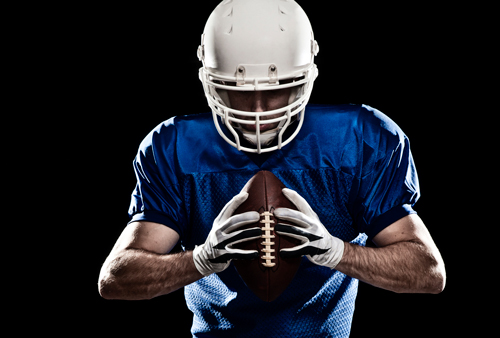
Jersey Finger: It’s Not What You Think
If you’re experiencing finger pain or have recently suffered an injury, it’s important to understand the signs, symptoms, and treatment options for jersey finger.
What is Jersey Finger?
Jersey finger is a hand injury common among athletes who participate in tackle sports such as football and rugby.
– What Can Cause Jersey Finger?
Jersey finger occurs when a player grabs an opponent, entangling their finger in the jersey.
As a result, the fingertip, or distal interphalangeal joint, is hyperextended, and the flexor digitorum profundus (FDP) tendon attaching the joint to the rest of the finger is torn or ruptured.
Early diagnosis and appropriate care can make a big difference in your recovery.
– Recognizing the Signs and Symptoms
Here are the key signs to look out for:
- Pain and Swelling: Intense pain and swelling at the base of the affected finger, often accompanied by bruising, can make everyday tasks difficult.
- Inability to Bend the Finger: If the flexor tendon is damaged, you may notice stiffness and restricted movement, making it hard to bend your finger.
- Lump in the palm of the hand: In some cases, the tendon damage can cause the finger to appear deformed or out of alignment.
If you notice any of these symptoms, it’s crucial to seek medical attention right away.
At The Jackson Clinics, our experienced orthopedic specialists provide thorough evaluations and personalized treatment plans to help you recover and regain full finger functionality.
Types of Jersey Finger Injuries
About three-quarters of jersey finger injuries affect the ring finger.
Jersey finger injuries can be divided into three types:
– Type 1
- The FDP tendon is torn but not fully ruptured. It’s frayed, so you might still have some finger function but it’s compromised.
– Type 2
- The FDP tendon is completely ruptured, resulting in a significant loss of finger function. Surgery is often needed.
– Type 3
- The FDP tendon is ruptured and has pulled off a bone fragment where it was attached. This requires surgery to fix both the tendon and the bone fragment.
Diagnosing Jersey Finger
An accurate diagnosis is the first step toward effective treatment.
Here’s what to expect when you visit a healthcare professional for a suspected jersey finger:
- Physical Examination and Medical History: We’ll examine your injured finger for any signs of deformity, swelling, or tenderness and ask about how the injury happened, along with any symptoms you’re experiencing.
- X-rays or MRI: X-rays can help identify any bone fractures or dislocations, while an MRI provides a detailed look at the soft tissues, such as tendons and ligaments.
- Stress Tests: These tests help evaluate the stability of your finger. We might apply pressure and move your finger in different ways to check for any ligament damage or instability.
If you think you have a jersey finger injury, it’s essential to seek prompt medical care.
Treatment Options For Jersey Finger
Prompt treatment of jersey finger is essential for complete and timely recovery. Delay prolongs rehabilitation.
Treating a jersey finger injury depends on the severity of the injury, but the main goal is always the same: restoring the function and strength of your finger.
- Immobilization: For less severe injuries, we might recommend immobilizing the finger with a splint or cast. This helps stabilize the finger and allows it to heal properly, usually over a period of several weeks.
- Surgical Repair: Nearly all cases of significant jersey finger require surgery, especially when the tendon is completely torn or there is significant damage. Surgery involves reattaching the tendon to the bone, followed by a period of immobilization and focused rehabilitation.
- Physical Therapy: Physical therapy is a key part of the recovery process. Our skilled physical therapists will work with you to create a personalized treatment plan that helps restore range of motion, strength, and overall hand function.
– Post-Surgery Rehabilitation
- Early Motion Exercises: Early motion of the healing finger is critical; passive flexion exercises begin about one week after surgery.
- Strengthening Exercises: Use of putty and hand therapy balls to alleviate stiffness and improve the range of motion.
- Care and Precaution: Care must be taken not to introduce too much stress too early, or healing will be slowed.
- Physical Therapy: Physical therapy can reduce the risk of repeat injury.
– Working with Your Physician
At The Jackson Clinics, our specialized physical therapists will work with your physician to design an appropriate exercise program that will help restore finger range of motion, as well as pinch and grip strength to your finger.
Did you know you have Direct Access* to Physical Therapy? No referral, no problem!
Recovery and Return to Sports
Although most people recover full hand function following a jersey finger injury, they typically cannot return to playing sports for four to six months.
In the meantime, regaining the use of your fingers will enhance your quality of life and allow you to perform daily activities free of pain and with maximum flexibility.
At The Jackson Clinics, we’re here to provide expert diagnosis and a treatment plan tailored to your specific needs, ensuring you recover as fully and quickly as possible.
Reach out to us today to get started!
The Jackson Clinics serves 18 locations throughout Northern Virginia.
Find one near you: https://thejacksonclinics.com/locations/


















